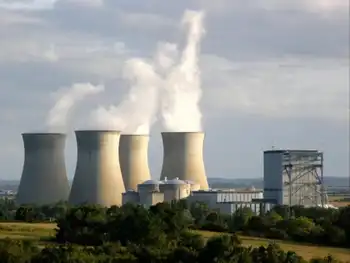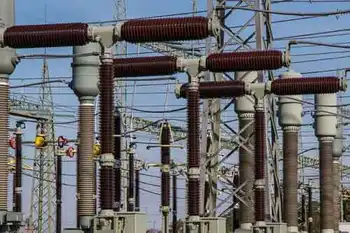Water discharge permit for TVA reactor lapses
By Associated Press
Substation Relay Protection Training
Our customized live online or in‑person group training can be delivered to your staff at your location.

- Live Online
- 12 hours Instructor-led
- Group Training Available
The five-year permit for releasing cooling water into the Tennessee River expired in November 2006, and the nation's largest public utility has been operating under a temporary extension since then, in part because of delays by regulators themselves.
State officials say TVA continues to meet requirements for the plant's withdrawals and discharges into the river.
Still, the Tennessee Department of Environment and Conservation wants TVA to update 15-year-old data used to support the new permit. They also found problems with a self-monitoring program at the plant. And they say they won't consider a second reactor now under construction at Watts Bar until later.
The single-reactor Watts Bar station, some 50 miles south of Knoxville, draws about 150,000 gallons a minute from the river. It returns slightly less because of evaporation in the cooling process. The discharge mixes with 3 million to 4 million gallons a minute already flowing by the plant.
Nuclear plants are subject to restrictions on the temperature of the discharged coolant because hot water can kill fish or plants or otherwise disrupt the environment.
Those restrictions, coupled with the drought, led to a one-day shutdown last August of a TVA reactor at Browns Ferry in Alabama, which also taps the Tennessee River.
This has never been a problem for Watts Bar. The plant is closer to TVA's deep reservoirs north of Knoxville that can send a wave of cold water downriver when temperatures rise. The discharge limit is 95 degrees. Watts Bar didn't get above 90 degrees last summer.
TDEC spokeswoman Tisha Calabrese-Benton said there have been "no temperature violations even in the drought" at the 12-year-old Watts Bar station, a 1,200-megawatt plant capable of powering 650,000 homes.
The old permit, which covers process wastewater, cooling water and stormwater runoff, will remain "fully effective and fully enforceable" until a new permit is issued, said Saya Qualls, TDEC's chief engineer.
"There have been no changes to the site since (the last permit) was issued. So there is nothing that is happening or can happen as the result of the permit being 'administratively continued'" or extended, she said.
However, DHEC wants TVA to update 1993 monitoring data in its new permit application.
"They have asked for new numbers and we are going to give them to them," TVA spokesman Gil Francis said.
The Nuclear Regulatory Commission raised a similar complaint in March to TVA's application to build and operate a next-generation nuclear plant at the Bellefonte site in Alabama. TVA used a decade-old computer model supported by 1963 data to forecast river flooding and was asked to provide new data for that, too.
Tennessee monitors long-term environmental trends in its rivers, but it relies on licensees to monitor themselves on a daily basis. The state follows up with annual inspections.
TDEC's 2007 annual inspection at Watts Bar discovered a self-monitoring problem — a broken flow meter that measures discharged water moving from one holding pond to another within the plant — and a leaking fire protection line. Both problems were fixed, though it took more than a year to replace the flow meter.
Watts Bar was the last new nuclear plant in this country when it came online with a single reactor in 1996. TVA is now spending $2.5 billion to complete the plant's second reactor by 2013.
Qualls said the pending discharge permit will run through 2011. She expects the second reactor won't be considered until the next permit comes under review, probably in 2010.











